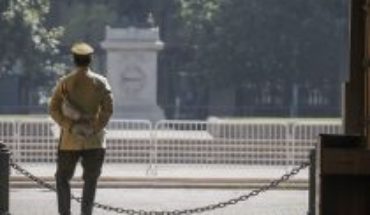Thursday, March 18, with bells and whistles President Sebastián Piñera, presented together with the Secretariat for prevention of crime, Katherine Martorell, the new system of surveillance of the Metropolitan Region, that it will consist of drones of the art and modern surveillance cameras, called “Mobile remote monitoring system”.
“It is our duty as Government to do everything in our power to bring more tranquility and security to the Chilean homes, and with greater strength, will and effectiveness to the crime,” said the President in a ceremony at that time in the Plaza de la Constitucion. The system, as reported, has aircraft remotely piloted, known as drones, equipped with infrared cameras for night vision and high definition, able to record and transmit images in real time. It also has more than one hundred security cameras; and centers of monitoring in the regional municipalities, where they would store the images captured by these drones.
More than one week later, however, the first problem for the security project became star of the Government: the Council for transparency (CPLT) sent a trade to Martorell where “requested information indicating compliance with the law N °” 19,628, personal data, with regard to the implementation of the so-called ‘mobile video surveillance system’ “.”
In the document signed by the President of the Agency, Marcelo Drago, require the Undersecretary that in 10 business days inform the CPLT on the way in which compliance will be given to the provisions of the law Nº 19,628, on protection of the private life on the basis that the body has to ensure compliance with the Act.
Doubts arising to the CPLT are based on what they themselves have recommended municipalities since the year 2011 adopted remote monitoring systems “all measures, both organizational and technical, to protect the integrity, confidentiality and” availability of the data contained in your records in order to avoid the alteration, loss, transmission and unauthorized access of the same”.
In that sense, tell it to the Undersecretariat for crime prevention that explain 13 points, among which is the phase of development in which is the surveillance system, outcomes that threw its implementation underway, the type of sensitive information that is compiled, if the system includes face recognition and the policy and legal framework that would authorize the use of this system; In addition to the maximum period of storage of the material gathered and how will be treated the images of children (see trade at the end of the note).
NGO on alert but the CPLT aren’t the only ones who are alerts by putting up video surveillance of the Government System. In the NGO Derechos Digitales seem serious that “Government impulse a measure of this type without a prior discussion in Congress, which basically allows you to have tools to implement a series of protections regarding the way in which this system will to” function”, as says Vladimir Garay, director of communications and incidence of the entity.
“Seems to be worrying the lightness with which the Government has decided to implement this system of remote monitoring, particularly with respect to capabilities that have the system, because one of the ads held is that these drones are equipped with technology of” infrared cameras and facial recognition,”he added.
According to Garay, for this type of technology can be deployed is required to occur “very explicit” circumstances: one, which is to enact a law enabling the use of them; two, in case there is no law, that persons who are monitored to deliver an express recognition that authorizes its use and acquisition of images, for example. But none of these situations is fulfilled in these cases, expert warns.
Another NGO looking with concern the implementation of this system of video surveillance is the Foundation data protected. They had already touched this theme in a campaign called “Privacy thieves”, which indicate that the use of drones to keep watch over the citizenship is on the rise in Latin America, at the hands of the authorities.
“Is observed that the industry of drones is intersects with the Panopticon story of politicians in the region.” Insofar as there are authorities seeking to monitor a large number of population by means of video cameras installed on drones for the brake to the criminality, we will have a panoptic logic that takes place in the cities. “Little matter that investigations take account that these measures do not affect a real reduction of the crime or that the main effect has to do with the movement of undesired people by the authority of certain public spaces”, indicate in its report.
“In this way, political discourse begin to set up human rights violations. The constant feeling of being watched by drones involves inhibition of performing certain actions in public spaces such as artistic, dissidents or political speeches, demonstrating that privacy functions as a shield for the development of others human rights such as freedom of expression and freedom of Assembly”, sentenced.
Read the office of the CPLT here.
translated from Spanish: Doubts the Council for transparency with the system of video surveillance that the Government launched
April 1, 2019 |





